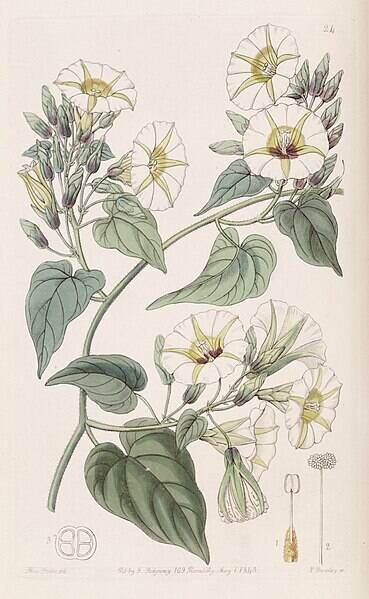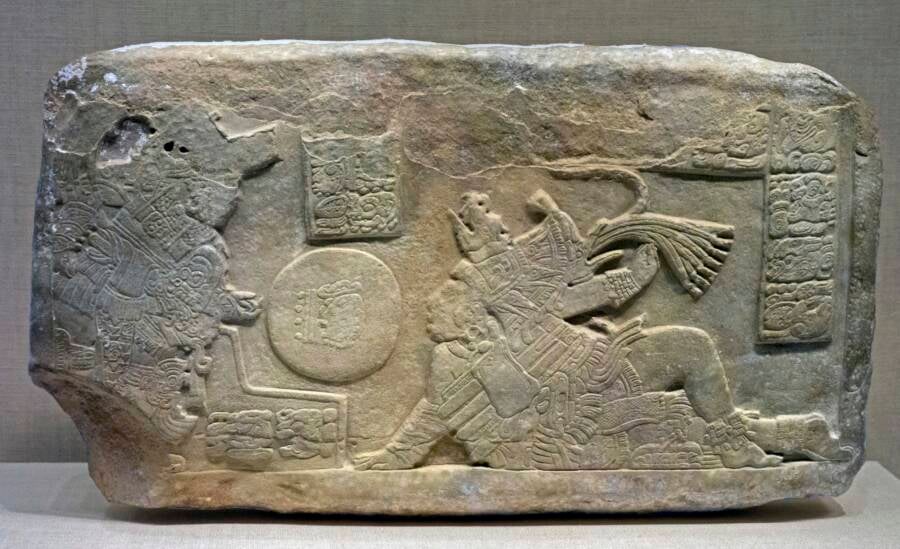Archaeologists used environmental DNA to make this "extraordinary" discovery beneath a 2,000-year-old ballcourt in the ancient Maya city of Yaxnohcah.

CC-BY-SA-2.5/Wikimedia CommonsA depiction of the Maya ballgame.
A recently published study is revealing how the Maya used hallucinogenic and medicinal plants to bless their sports fields.
Archaeologists collected sediment samples from a Maya ballcourt in the ancient city of Yaxnohcah and used environmental DNA testing to determine the types of plants present at the site.
The researchers believe these plants had cultural significance to the Maya and were placed beneath the ballcourt intentionally during its construction for ceremonial purposes.
Discovering Evidence Of Ceremonial Plants At The Ballcourt
From 2016 to 1022, archaeologists from the University of Cincinnati, Mexico’s National Institute of Anthropology and History, the University of Calgary, the Autonomous University of Campeche, and the National Autonomous University of Mexico excavated sites at the ancient city of Yaxnohcah, including part of a 2,000-year-old ballcourt. The researchers wanted to better understand Maya ceremonial customs by testing soil from the ballcourt, which would have been a site of immense cultural importance.
“Ballcourts occupied prime real estate in the ceremonial center,” University of Cincinnati professor David Lentz said in a press release. “They were a fundamental part of the city.”
The Maya would bless new constructions with perishable materials, including plants and herbs. With this knowledge, researchers sought to discover the types of organic matter used in these blessings.
At a site called the Helena complex, Professor Emeritus Nicholas Dunning collected a sample of sediment from the base of a ballcourt wall and used environmental DNA testing to identify several intriguing ceremonial plants.
As described in the researchers’ study, which was published in the journal PLOS One, the most interesting find was the presence of Ipomoea corymbosa, a type of morning glory with hallucinogenic properties. Other plants included chili peppers, jool, and lancewood.

Public DomainA drawing of Ipomoea corymbosa, a plant with seeds that produce effects similar to LSD.
“We think of chili as a spice. But it was much more than that for the ancient Maya,” Lentz stated in the press release. “It was a healing plant used in many ceremonies.”
Additionally, the Maya used the leaves of the jool tree to wrap food bundles and its bark to treat snake bites. And lancewood leaves had anesthetic, antibiotic, and vasodilator properties.
The discovery of this vegetation together beneath the ballcourt points to the importance of both the plants and the Maya ballgame itself.
The Importance Of The Ballcourt In Maya Culture
Why did the Maya spread both hallucinogenic and medicinal plants on their new constructions? The answer lies in their reverence for their gods.
“When they erected a new building, they asked the goodwill of the gods to protect the people inhabiting it,” Lentz explained in the press release. “Some people call it an ‘ensouling ritual,’ to get a blessing from and appease the gods.”
In the case of ballcourts, the Maya believed their gods enjoyed the sports played there. In Maya mythology, two hero twins played a game with the gods in order to escape the underworld. The match resulted in the decapitation of one of the brothers and the use of his head as the ball.

Adrian Hernandez/Wikimedia CommonsAn ancient relief depicting the Maya ballgame.
In honor of the story, the Maya played games like pok-a-tok, which was similar to basketball and soccer and involved throwing or kicking a rubber ball through a hoop on the wall.
There are even accounts of Maya players dying during these games, either by injuries sustained in the course of the match or through human sacrifice.
“In a sense, structures… were thought to be alive or to have souls that needed to be nourished,” Lutz explained. Thus, covering their ballcourts in revered plants was a way to honor both their gods and the souls of people who lost their lives there.
As Eric Tepe, a botanist and professor at the University of Cincinnati, stated in the press release, “I think the fact that these plants, which have a known cultural importance to the Maya, were found in a concentrated sample tells us it was an intentional and purposeful collection under this platform.”
After reading about the hallucinogenic plants found beneath a Maya ballcourt, dive into the story of El Castillo, the ancient Maya pyramid that towered over the city of Chichén Itzá. Then, read about Camazotz, the fearsome ancient Maya “death bat” god.






